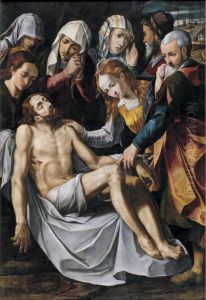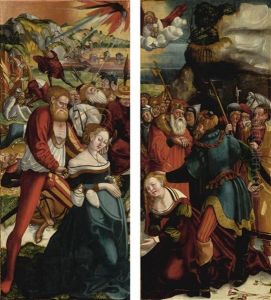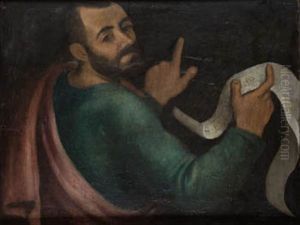Gaspar Becerra Paintings
Gaspar Becerra was a pivotal figure in the Spanish Renaissance, an artist whose contributions significantly influenced the development of fine arts in Spain during the 16th century. Born in Baeza, Andalusia, in 1520, Becerra was not only a painter but also a sculptor and architect, showcasing the multidisciplinary talents that were characteristic of Renaissance artists. His early training and career are somewhat obscured by the lack of documentation, which is common for many artists of his time. However, it is widely believed that he traveled to Italy early in his career, where he was exposed to the works of Italian masters, absorbing the nuances of the High Renaissance and Mannerism, which he would later integrate and adapt to the Spanish context.
Becerra's time in Italy was particularly influential; he is thought to have studied under Michelangelo, which had a profound impact on his approach to sculpture and painting. This Italian sojourn allowed him to imbibe the essence of Renaissance humanism and the emerging Mannerist style, characterized by its sophisticated elegance and complexity. Upon returning to Spain, Becerra brought with him not just the technical skills and stylistic sensibilities he had acquired in Italy but also a deep understanding of Renaissance humanism, all of which he would incorporate into his works in Spain.
His return to Spain marked the beginning of his most productive period. Becerra was instrumental in introducing the Mannerist style to the Spanish art scene, a significant shift from the Gothic and Renaissance styles that had previously dominated. One of his most notable contributions was his work on the high altar of the Cathedral of Astorga, where his skills as both a sculptor and an architect were prominently displayed. Unfortunately, much of his work has not survived or has been significantly altered over the centuries, making it challenging to fully assess his impact.
Despite the scarcity of surviving works, Becerra's influence on Spanish art is undeniable. He is credited with establishing a school of painting in Madrid, which played a crucial role in the development of Spanish Renaissance art. His disciples and followers continued his legacy, spreading the Mannerist style across Spain. Becerra's blend of Italian Renaissance techniques with Spanish sensibilities helped lay the groundwork for the flourishing of Spanish art in the late Renaissance and Baroque periods.
Gaspar Becerra died in 1570, leaving behind a legacy as a key figure in the transmission of Italian Renaissance and Mannerist influences to Spain. His work and teachings significantly shaped the evolution of Spanish art, making him an important but somewhat overlooked figure in the history of the Spanish Renaissance.


